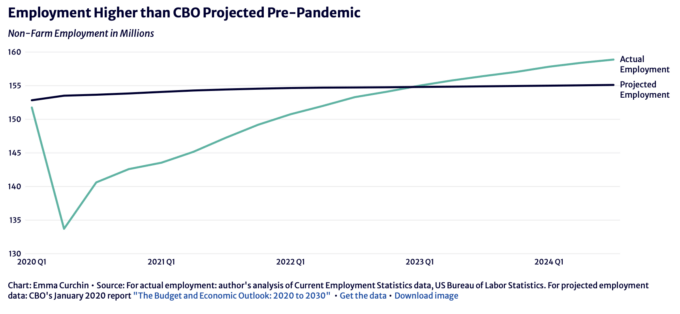India’s Foreign Trade: How Free Can it be?
A case is being made out for India to lower tariffs and allow import competition. It is added that this would benefit India irrespective of what President Trump wants. The PM addressing the 10th NITI Aayog Governing Council meeting suggested that the States should leverage the Free Trade Agreements (FTA) India is signing with several countries. In other words, the FTAs are going to be the new normal. Till now, India has had adverse experience with FTAs and that is why protectionism was increased during PM Modi’s first two terms.
Proponents of free trade have approved of the cuts in tariffs in the Union Budget 2025-26. They argue that India should offer greater market access for imports just as it seeks access from others. Is this just given that different countries are at different levels of development, and especially since the USA is going protectionist?
In quick succession, twice Trump has asked the CEO of Apple, Tim Cook, to build in the US and not in India. This also undermines foreign investment in India. This is inopportune currently, when net foreign investment in India has precipitously fallen by 96 percent. India needs more investment to boost its growth.
India’s Experience With Opening up
In the 1980s, India initiated opening its markets to increase imports in the hope that soon exports would rise – the idea of a J-curve. It was said that India imports too little. The result was a sharp rise in foreign debt in spite of a surge in foreign remittances from the Gulf.
By 1988-89, a foreign exchange crisis ensued, triggered by the Gulf crisis and India came close to defaulting on debt repayment. It had to seek adjustment from the IMF and loans from the World Bank.
India’s tariffs have been a result of multilateral negotiations in the WTO involving give and take across nations. India gave concessions in TRIPS, TRIMS, Services, etc. President Trump is repudiating all this so as to bring back into the USA, manufacturing and jobs that have migrated to China, etc., because of the big wage differentials. But, this would require the USA to permanently levy high ‘protectionist’ tariffs.
Other nations too would levy high reciprocal tariffs on US imports. This would lead to decline in trade with the US, inflation and fall in demand. Each nation would then look for other markets to sell what they were selling to the USA. It would be a godsend for them if India cuts tariffs in general and unilaterally.
India’s experience with FTAs with Korea, Australia and ASEAN has not been promising. The trade deficit has increased due to a surge of imports. So, bilateral agreements have not helped in boosting India’s manufacturing and trade. Though controversial, it is suggested that India’s share of manufacturing (at current prices) has declined in recent times.
India’s difficulties have also come in the way of early completion of negotiations on FTAs with the UK, EU and others. An agreement has now been reached with the UK but it remains to be seen how beneficial it would be to India. So, a general argument in favour of lower tariffs and allowing more imports is not justified by India’s recent experience.
Free Trade Limitations
Allowing import competition is an argument for ‘free trade’. It may hold in the hypothetical ‘first best’ situation. But the reality is ‘second best’ since there are distortions. If India opens up while other nations use tariff and non-tariff barriers to protect their economy, the Indian economy would be swamped. This is also President Trump’s argument for protecting the US economy by imposing high tariffs. So, under the circumstances, multilateral agreement, like under WTO, is required on not only tariffs but the wider trade. Unfortunately, President Trump is undoing WTO gains.
If the US feels the need to protect itself then India stands little chance under free trade. The argument for free trade is based on ‘comparative advantage’. It assumes that capital and labour can smoothly switch across sectors. That is far from the reality. India has disguised unemployment (surplus labour) in agriculture and trade because neither is there any alternative work nor is it possible to generate self-employment, given the lack of access to capital.
Free trade leads to differentiation across sectors and sections of society. There are gainers and losers from it. For instance, India cannot afford to open agriculture as demanded by President Trump. Most Indian farmers are small and marginal, cultivating less than 5 acres of land. They have little capital, weak access to credit and incomes close to the poverty line. This is unlike an average American farmer who is big by Indian scale and reportedly gets an average subsidy of Rs.26 lakh per annum. So, opening up Indian agriculture under free trade would impact adversely 60% of Indians who directly or indirectly depend on agriculture. Even Indian industry has hardly benefited from free trade agreements already signed.
Technology: Crux of Competitiveness
India’s technological weakness needs to be factored into any argument for free trade. It is hard to compete on equal terms with those who have developed technology. There is the ‘infant industry’ argument. Namely, industry needs protection to develop otherwise it would die a premature death. But, how long can the excuse of the infant industry argument be used?
As long as the nation lacks the capability to develop technology and that depends on its R&D expenditures. India has been a laggard, spending 0.65 percent of its GDP, since the private sector invests little on R&D. Other dynamic nations spend 2 to 4 percent of their GDP on R&D.
Technology is a moving frontier. Advanced technology of yesterday becomes intermediate and low technology later on. So, India has moved up the technology ladder but has largely been at the intermediate and low technology levels. So, it has to compete with the other developing countries and that leads to adverse income terms of trade.
Kaldor argued that there is an ‘advantage of a late start’. That is, those who are late developers have the technology path laid out and they can advance rapidly. But that requires R&D capability and in its absence, there is a ‘disadvantage of a late start’. India is suffering from this given its poor R&D effort. Further, modern technologies are hugely expensive and most developing countries are unable to invest that kind of funds. India could spend a lot more but this has not received the priority it deserves.
In brief, making a general argument that India should lower tariffs and allow import competition does not factor in a variety of real life economic and political factors.
Arun Kumar is a Retired Professor of Economics at the Jawaharlal Nehru University, Delhi. The views are personal.
Courtesy: The Leaflet




